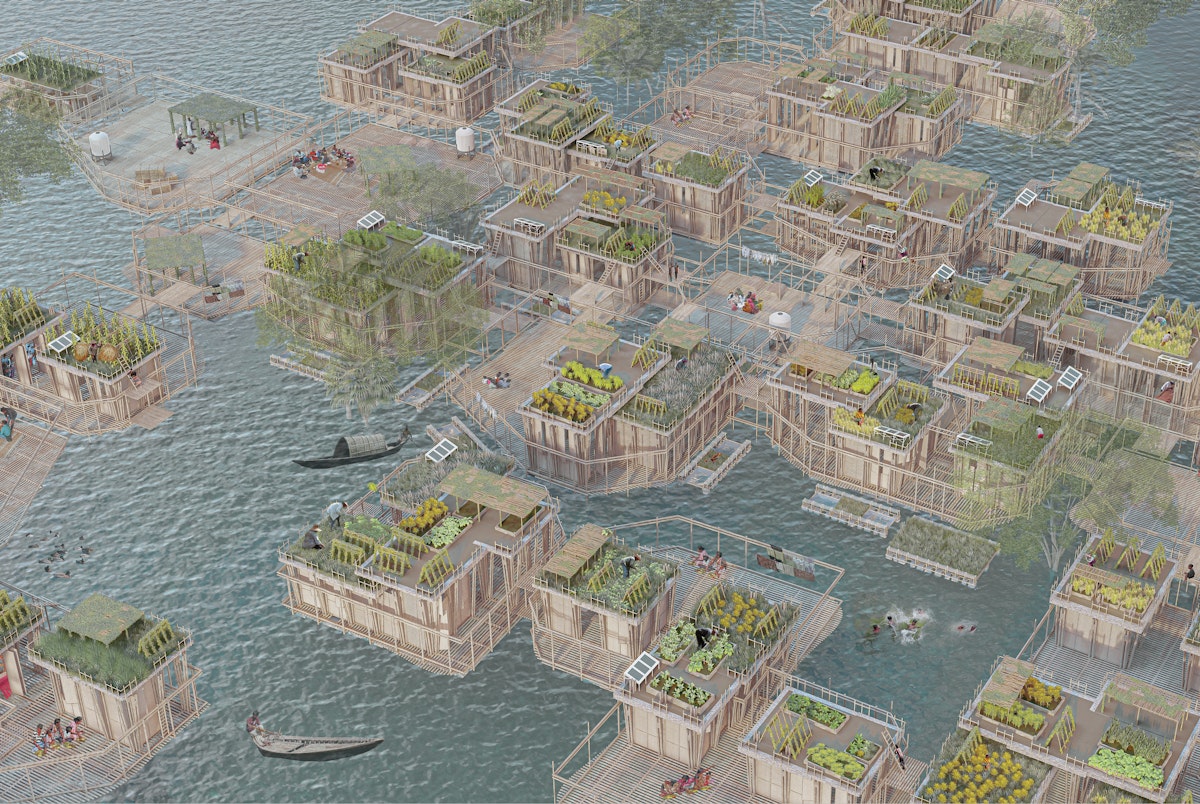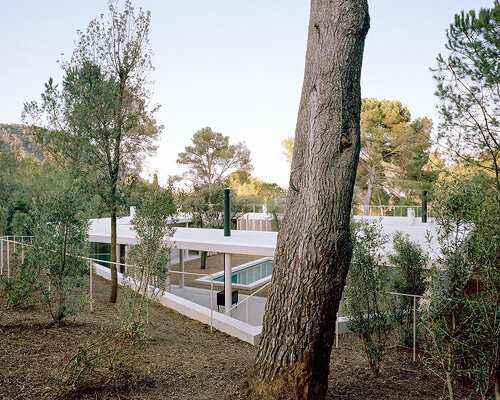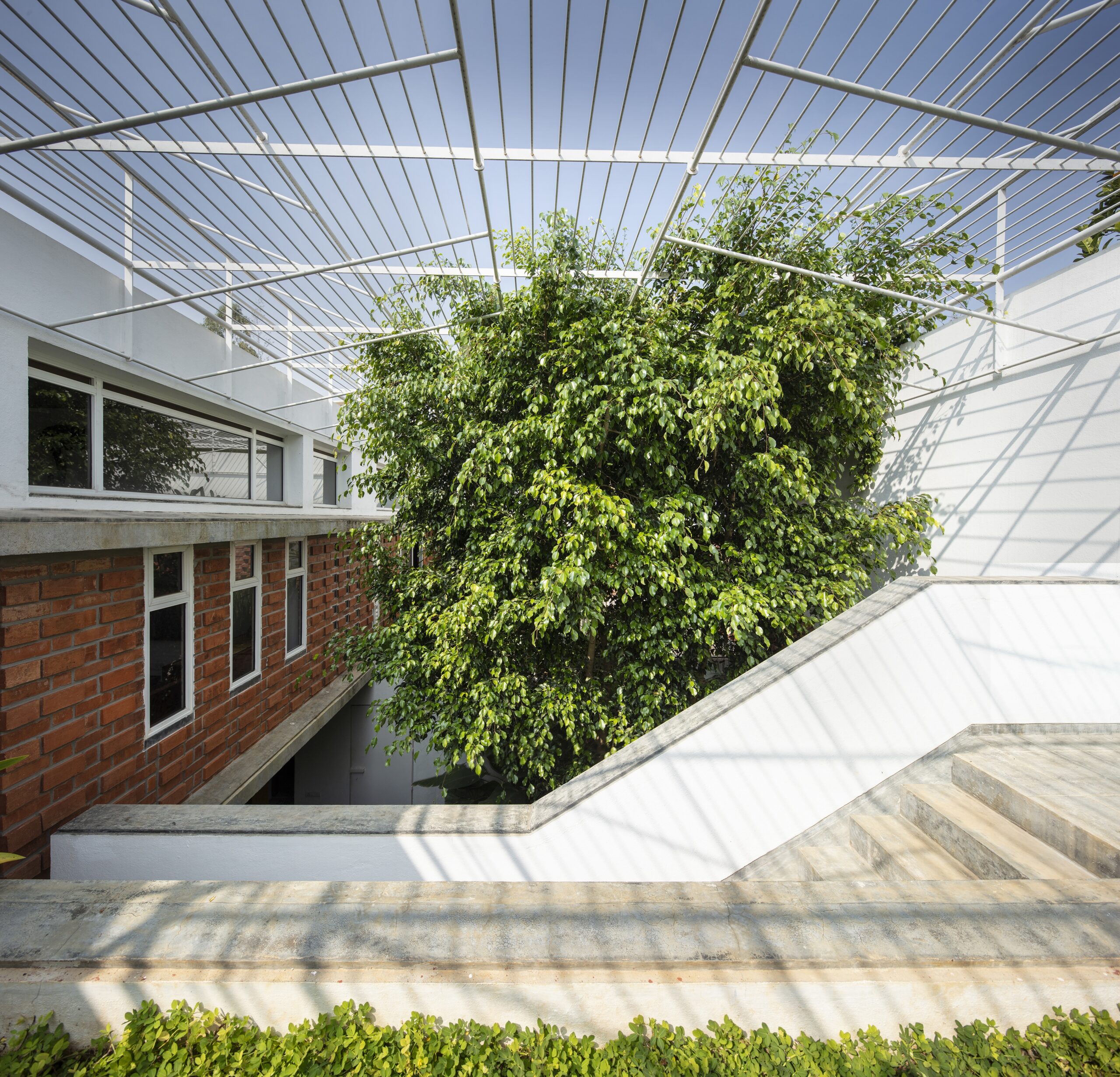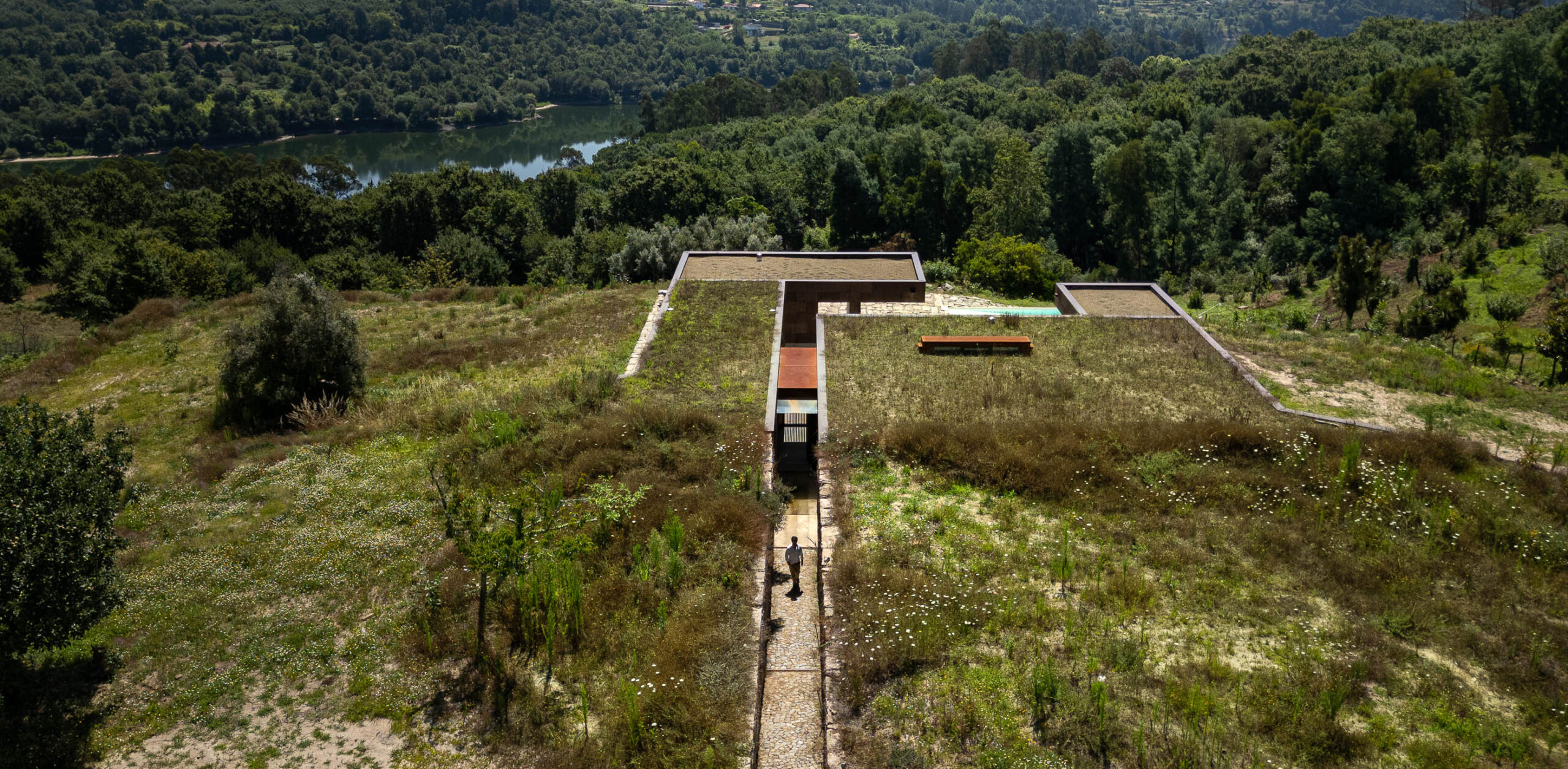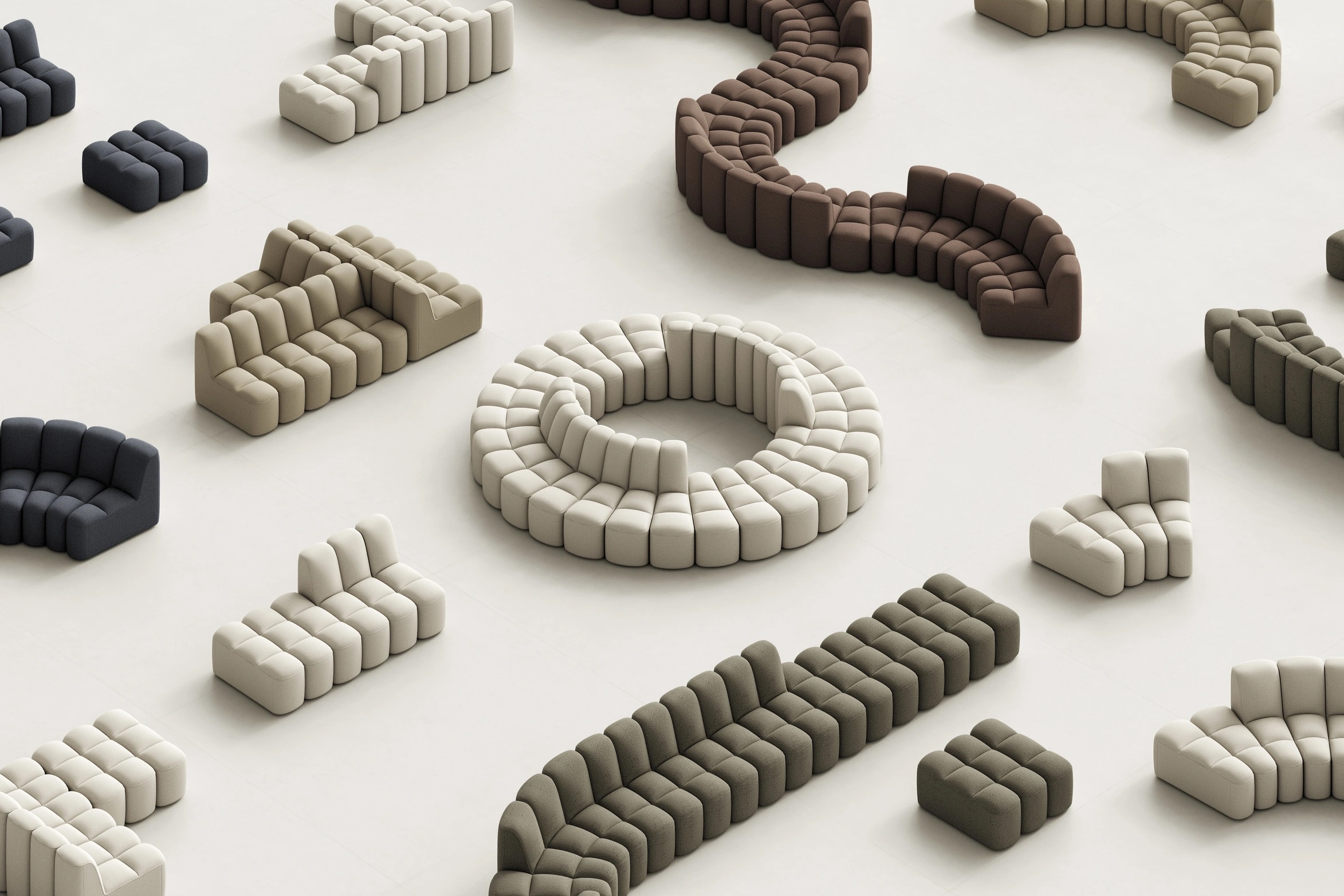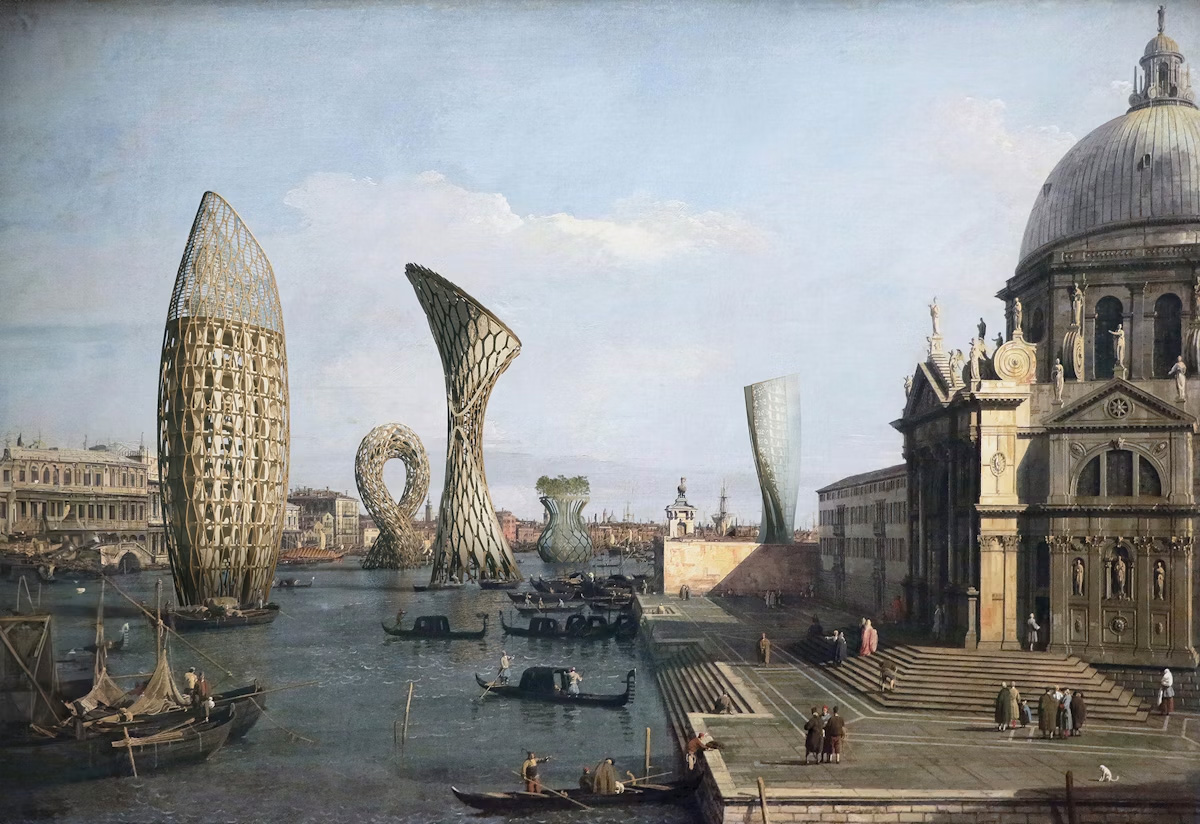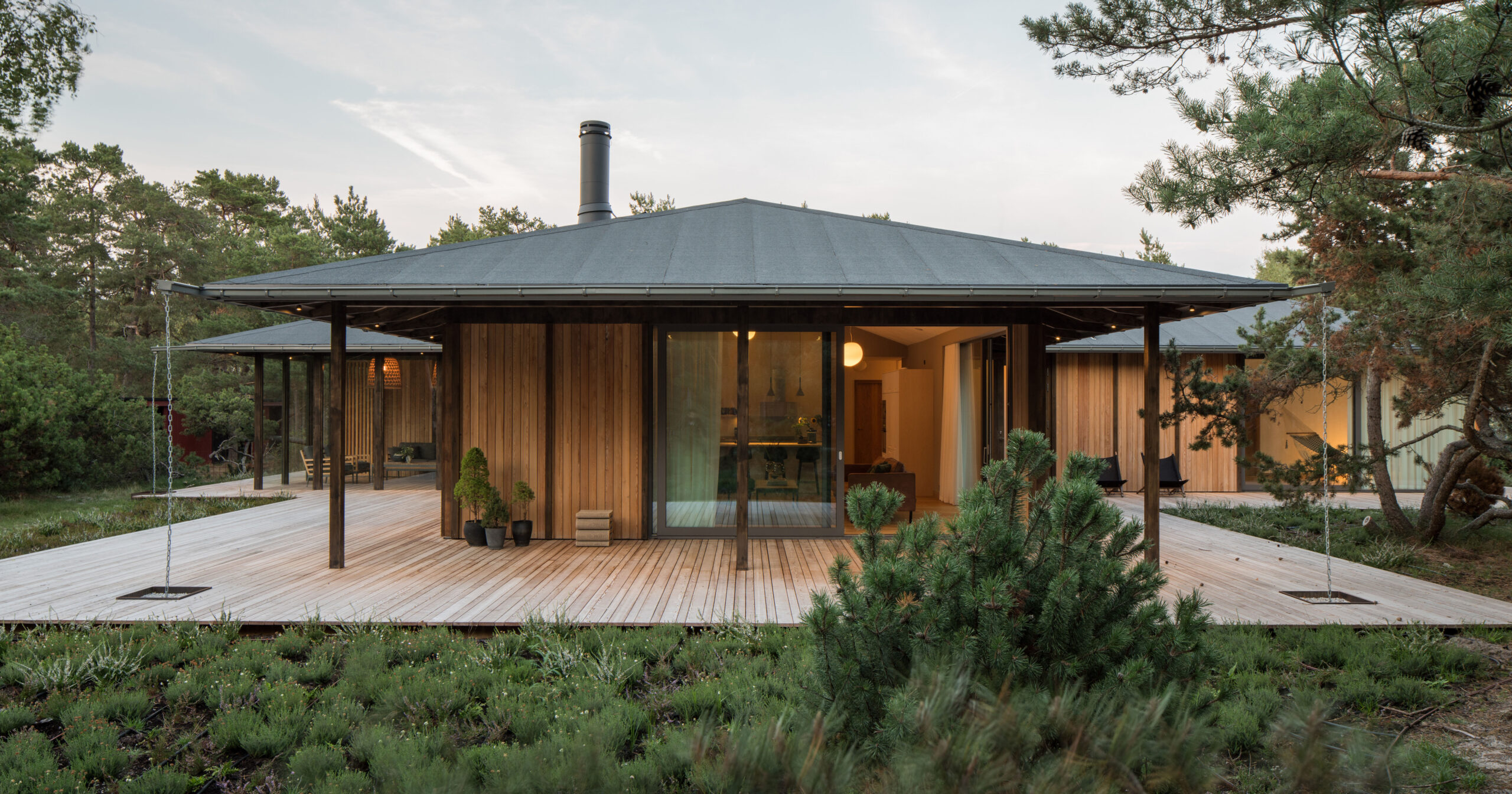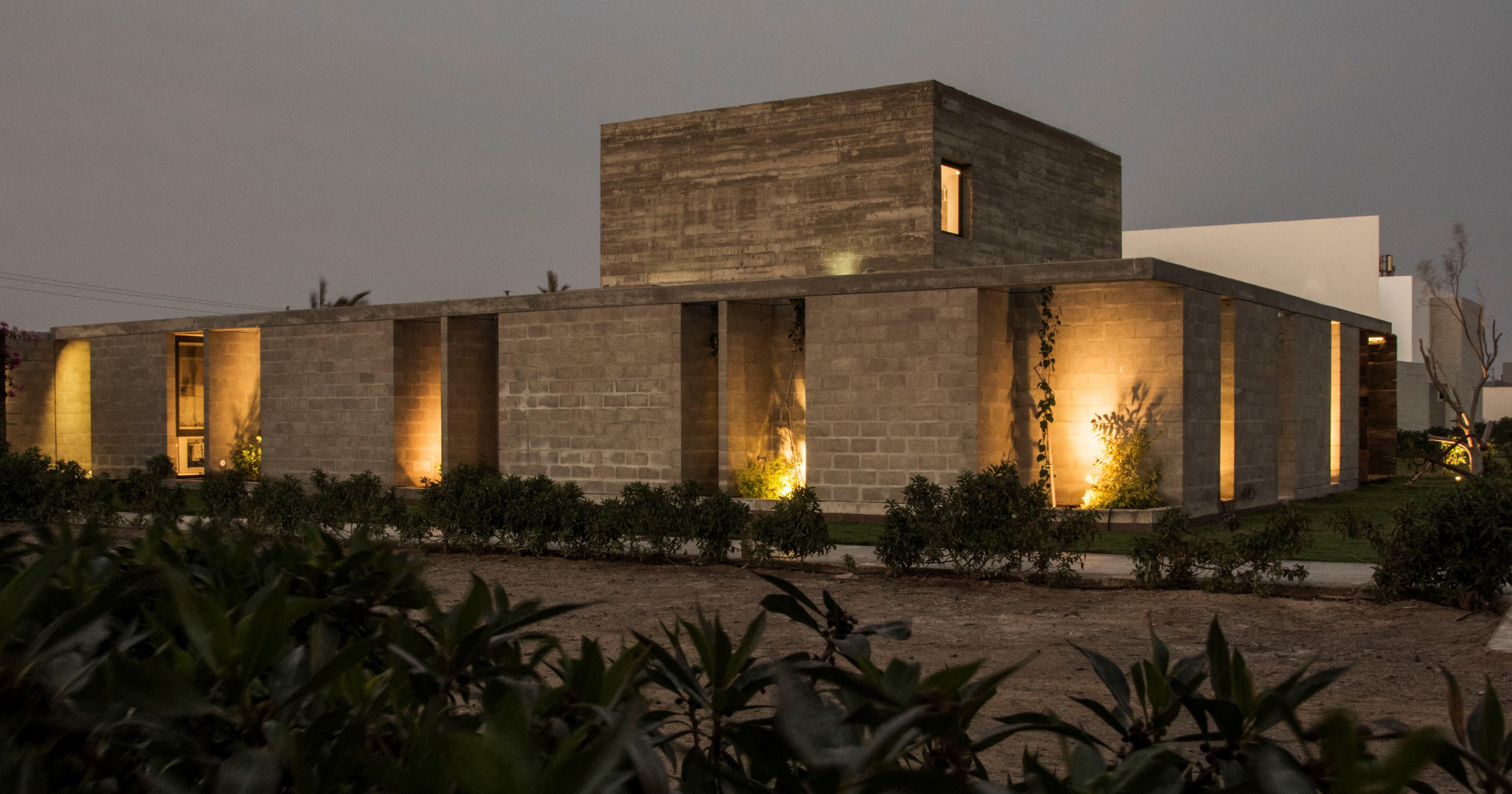Gothic Modernism: Why the Spookiest Buildings are Made of Glass and Steel
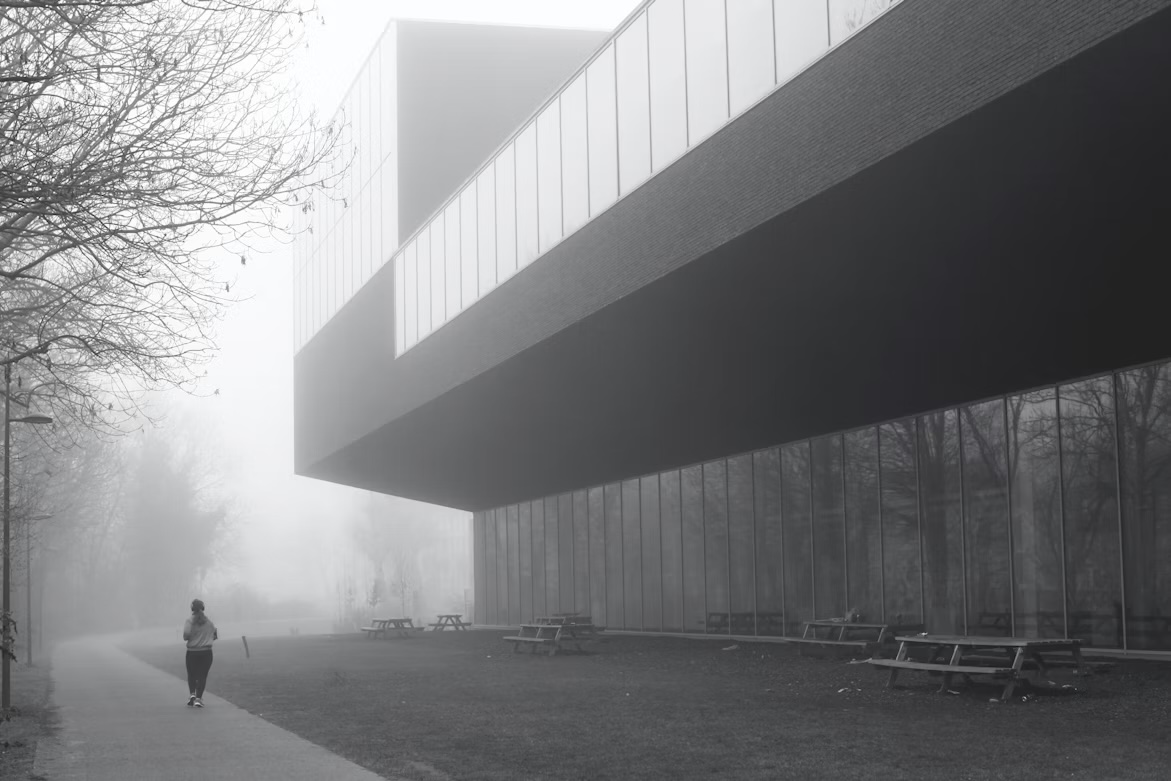
Architects: Want to have your project featured? Showcase your work by uploading projects to Architizer and sign up for our inspirational newsletters.
Close your eyes and picture a haunted house. More than likely, the house you pictured is perched on a hill, secured behind a wrought iron fence. (Well, not secured. The gate is open and swaying in the wind.) Architecturally, the house has Victorian Gothic features, such as steeply pitched roofs decorated with ornate gables and perhaps gargoyles peeking from the corners. There is at least one tower.
This is the style of house inhabited by both the Munsters and the Addams Family. In Poe’s “The Fall of the House of Usher” — an iconic early example of the haunted house motif — the dreadful Usher manor is described as having “long, narrow, and pointed windows” that let in meager streams of light through heavy “trellised” panes. These are elements of Gothic architecture, and together with the house’s overall state of disrepair, produce an emotional impression that the narrator describes as “an utter depression of soul which I can compare to no earthly sensation more properly than to the after-dream of the reveler upon opium — the bitter lapse into every-day life — the hideous dropping off of the veil.”
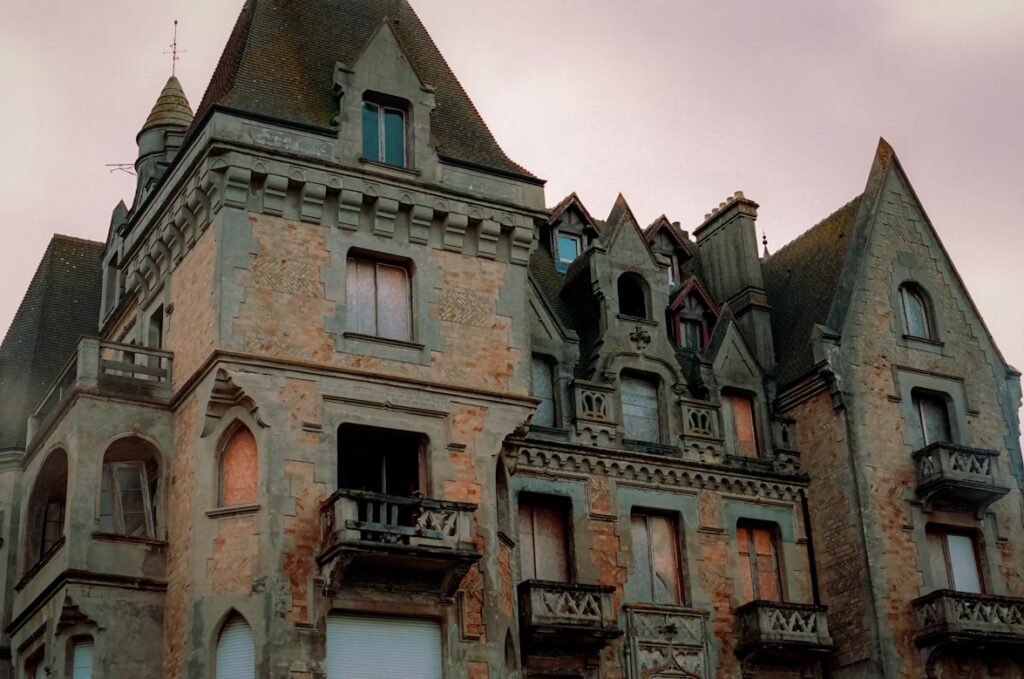
Gothic buildings have shadowy corners and crevices — places where things are hidden. Historically this has led to the style being used for haunted houses. Photo by Emanuelle Tilson via Unsplash
For Poe in the 19th century, it was Gothic architecture that spoke to a vanished past that lingered unnaturally in the present, an atmosphere of death that suffocated the living. Many 20th century architects, the high modernists, saw Gothic architecture the same way. Using industrial materials like glass, steel and concrete, they aimed to produce buildings for a new era, clean and luminous structures with no odd corners where ghosts could hide. You see this ambition in their rhetoric. Gropius, for example, expressed a desire to “create the purely organic building, boldly emanating its inner laws, free of untruths of ornamentation.” Corbu, more bluntly, said that “the styles are a lie,” meaning any style before modernism. Their idea was to realize the goals of the Enlightenment through architecture. Like Joyce’s Stephan Dedalus “history [was] a nightmare from which [they were] trying to awake.”
But what happens in a horror movie when a character tries to outrun their past? Or for that matter, in a Greek tragedy, another genre that, according to Aristotle, aimed to evoke fear? There is hubris in the very attempt. Adorno and Horkheimer recognized this issue in their 1944 book Dialectic of Enlightenment, in which they argued that the attempt to achieve Enlightenment — a society of rationally ordered freedom — had failed in their time because progressives and radicals never adequately reckoned with the true roots of injustice. Borrowing from Freud, they argued that these roots lie in the murky depths of the human psyche. The problem with the Enlightenment, they said, is that it presumed that historical progress, the process of stripping away superstition, would transform humans into beings who are fundamentally rational, orderly, and governed by enlightened self interest. In short, the Enlightenment imagined the man of the future as someone suited to living in Farnsworth House. But in reality, people cannot be changed so easily.
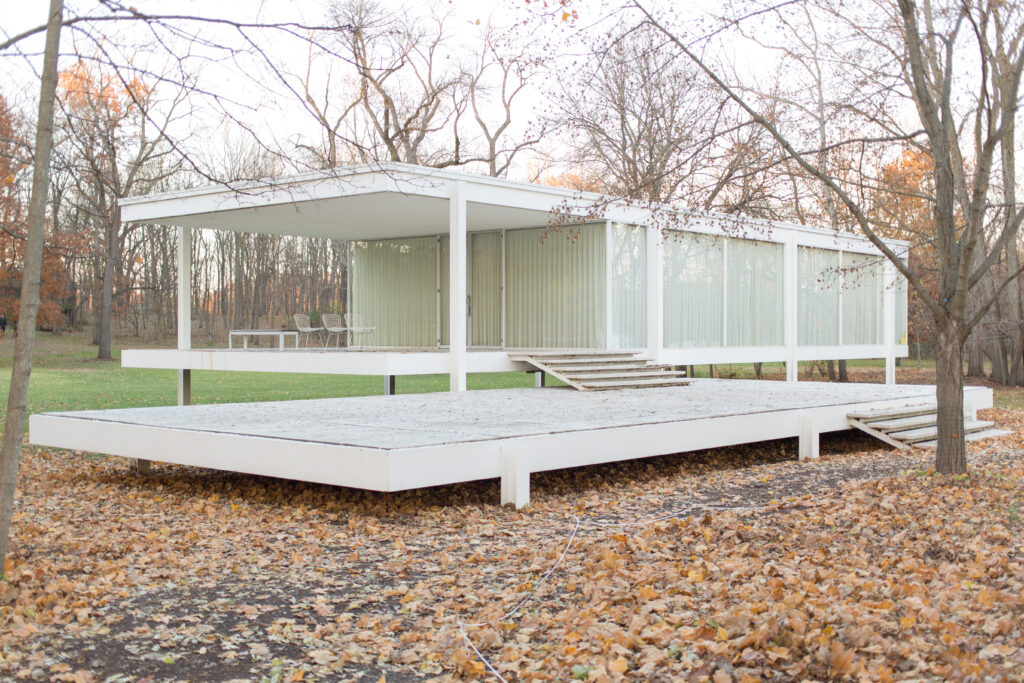
Mies van der Rohe’s Farnsworth House has no dark corners, no hidden places where ghosts can hide. Could such a house be haunted? Photo by Victor Grigas, CC BY-SA 3.0 via Wikimedia Commons
Horkheimer and Adorno were not opposed to the Enlightenment. To the contrary, the failure of Enlightenment was, for them, tragic, because its aims were noble. By critiquing the Enlightenment, they hoped to save it, and to stop the angry march of fascism, which they defined as Enlightenment’s opposite, or shadow: an ideology rooted in tribal feeling and other sentiments that the Enlightenment tried to repress.
We inhabit a similar historical moment to Horkheimer and Adorno, a time when utopian pictures of the future feel false and naive. Cynicism reigns, but many still look around desperately to find sources of hope. This is precisely why modernist architecture haunts us today — far more so than any other style.
Take the UN building in New York, which was designed by a team that included Oscar Niemeyer and Le Corbusier: a modernist symbol of enlightened international cooperation crafted from glass, steel and marble. It’s haunted. I realized this recently when the building’s escalator malfunctioned for Donald Trump as he made his way toward the General Assembly to deliver a speech that insulted the UN’s founding principles. Different explanations were given for why this happened, and probably there is some technical explanation after all. But still, the moment was uncanny. It appeared that the building, long silent, had finally decided to speak up for itself.
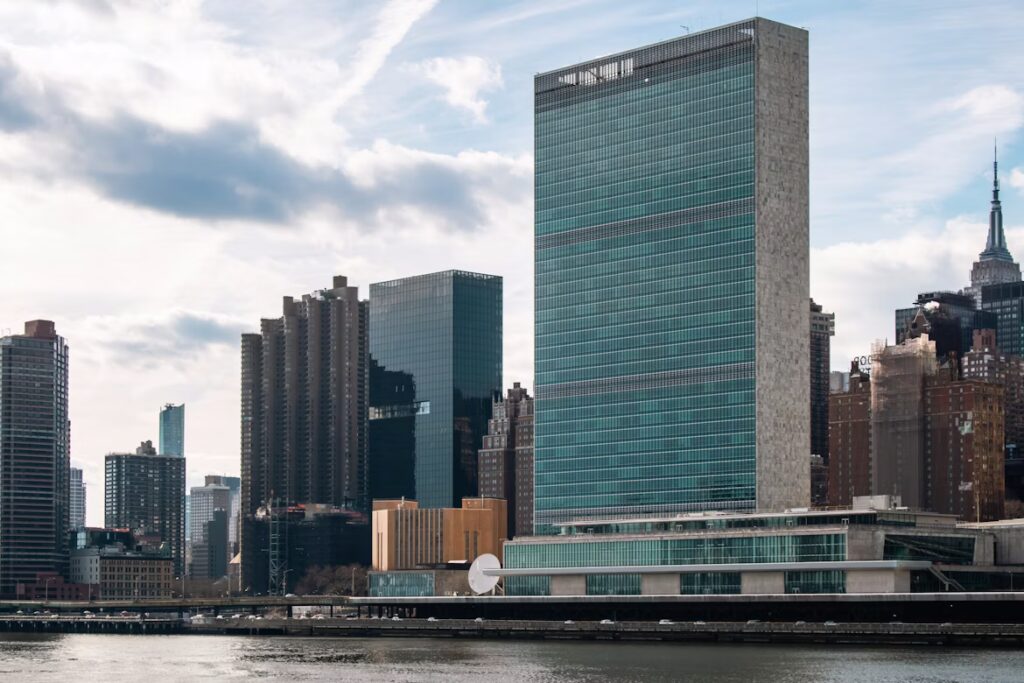
The UN Building seen from across the East River. Photo by Zoshua Colah, free to use under the Unsplash license.
I am not the first person to recognize that modernist buildings feel haunted in the 21st century. The trend actually goes back further. Writing in The Guardian in 2022, the architecture critic Owen Hatherley explained how modernist buildings have been used as the backdrop to horror films since the 1970s. He points specifically to the 1992 masterpiece Candyman as an example of a horror film in which modern architecture takes a starring role. This film is fittingly set in Chicago, the birthplace of the skyscraper and America’s architectural Mecca.
“Graduate student Helen Lyle lives in a gorgeous high-rise flat in Lincoln Village (this is in fact Carl Sandburg Village, which, like its fictional equivalent, is a 1960s social housing project that was privatised and turned into condominiums),” Hatherley explains in his synopsis. “She becomes obsessed with the urban legend of the Candyman: the murderous ghost of Daniel Robitaille, a black painter who was tortured and lynched for forming a relationship with a white woman in the 1890s. He was killed, we are told, on the future site of Cabrini-Green Homes, an estate of red-brick and concrete grids just outside the city centre that was by then the most notorious modernist failure in the US (opened in 1957, the buildings were demolished in the 00s, and replaced with private housing). One of these high-rise estates, we are shown, can be viewed from the windows of the other.”
Through the contrast between two modernist housing estates — one dilapidated public housing project, and another that was preserved through its conversion into private, luxury residences — Candyman visually represents how architecture is unable to transcend economic, social, and racial barriers to equality. It can embody an image of a better world but cannot turn that image into reality. And in that gulf between dreams and reality — well, that’s where hauntings occur.
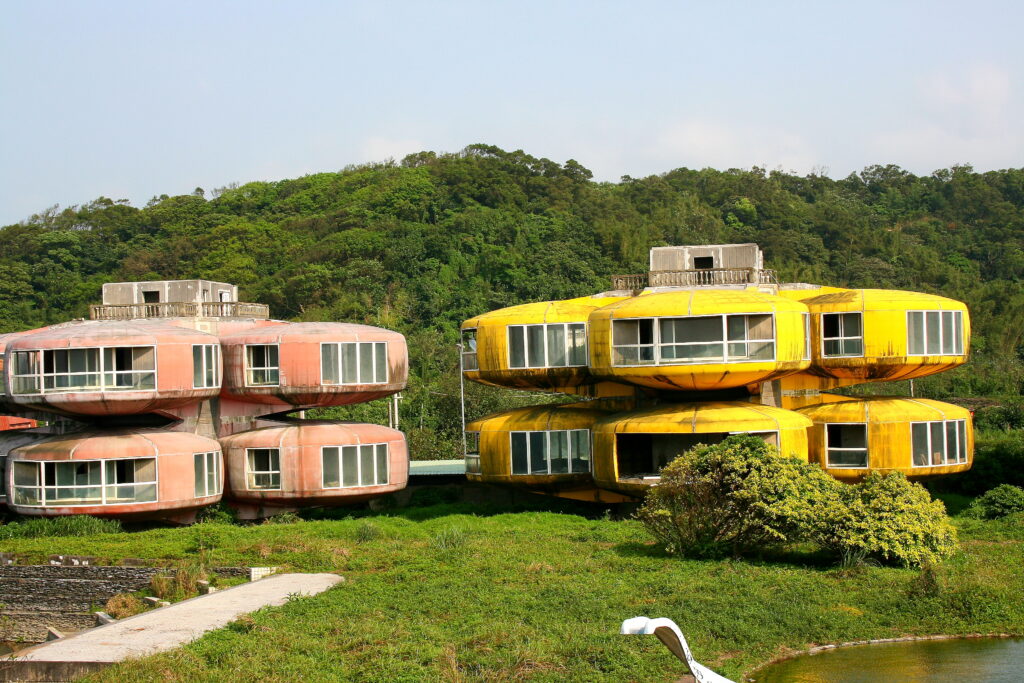
Ghost hunters often visit the abandoned Sanzhi UFO towers, the construction of which disturbed an ancient dragon deity. Photo by Carrie Kellenberger from Banciao, Taiwan, CC BY 2.0 via Wikimedia Commons
The so-called Sanzhi UFO Houses in Taiwan are a real-life example of haunted modernist buildings. Like any great haunted property, this one is abandoned. A quirkier take on modernism, these brightly colored, pod-like structures were intended as a vacation resort. The houses were modeled on the Futuro pod, a pre-fabricated housing type designed by the Finnish architect Matti Suuronen in the 1960s. Like many modernist projects, the Futuro pod was a utopian idea, an attempt to make vacation properties affordable for working people.
Construction of the Sanzhi UFO Houses was abandoned soon after it began in 1978 due to a series of mysterious deaths, suicides and car accidents. These were blamed on the fact that, early in construction, an ancient Chinese dragon sculpture was bisected to make room for a wider road. Like the Cabrini-Greene Homes in Candyman, the UFO Houses were unable to shake free from the ghosts of past centuries. Perhaps there is some significance, too, in the fact that the Sanzhi vacation resort was marketed mostly to US military personnel stationed throughout East Asia — lingering specters of the Second World War.
Fundamentally, ghost stories are about unfinished business. Modernism, as a utopian movement grounded in the idea that the future will be better than the past, is surely an unfinished project. We will be haunted by it as long as our society fails to live up to our own aspirations.
Architects: Want to have your project featured? Showcase your work by uploading projects to Architizer and sign up for our inspirational newsletters.
Cover image: Photo by Danny de Vylder. Free to use under Unsplash license.
The post Gothic Modernism: Why the Spookiest Buildings are Made of Glass and Steel appeared first on Journal.
























